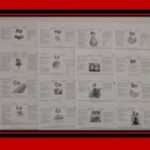
Have you ever made the statement “I wish I didn’t have to go to the grocery store! I wish my groceries could be delivered right to my door!” According to the media, online grocery deliveries are expanding and on the rise. This was a recent feature in our local Sunday paper and it caught my attention! I thought it a great way to have students investigate, research and analyze how cost effective the convenience of these services actually are. So, check out the activities below and if you have any suggestions, please share in the comment section below!










